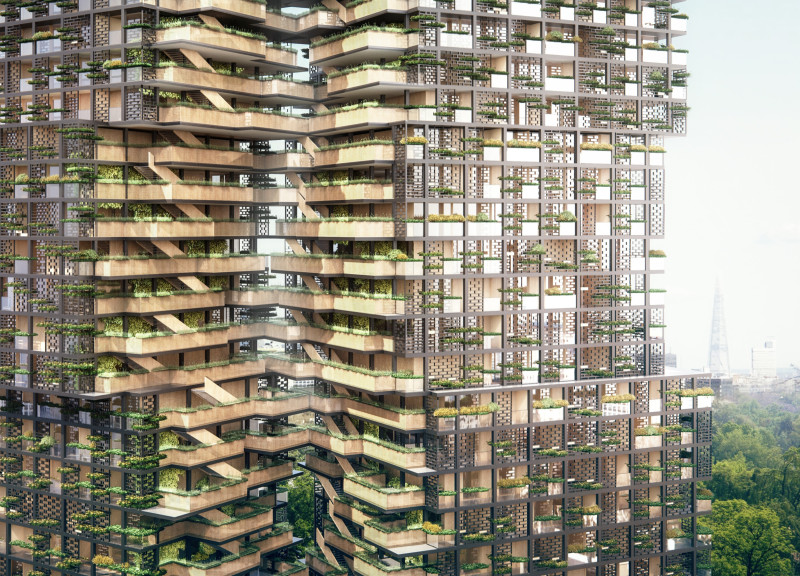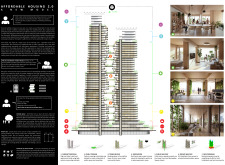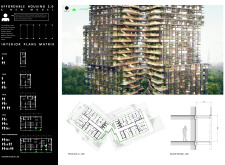5 key facts about this project
At its core, the project represents a vision of community-centered living that prioritizes accessibility and inclusivity. With a clear focus on affordability, this architectural solution integrates modular housing units that can be adapted to accommodate diverse family structures and living arrangements. The design not only addresses the urgent need for affordable housing but also emphasizes the importance of community bonds and social interaction among residents.
The primary function of "Affordable Housing 2.0" is to provide quality housing that is financially accessible to a wide range of demographics, including young professionals, families, and single individuals. It achieves this by employing innovative financial mechanisms, such as rent-to-equity options, which empower residents to invest in their homes over time. This prject also features common spaces to facilitate social interaction and community engagement, including shared gardens, recreational areas, and communal facilities.
A crucial aspect of the project is its architectural design, which features two intertwining towers that create a visually interesting silhouette against the urban backdrop. The design incorporates staggered balconies and terraces that not only enhance the aesthetic appeal but also provide residents with private outdoor spaces, allowing them to connect with nature while enjoying urban living. The transparency of materials, particularly the extensive use of glass, is integral to the design philosophy, ensuring ample natural light permeates the living spaces, fostering a sense of openness and connection to the surroundings.
The choice of materials reflects a commitment to sustainability and environmental responsibility. Cross-laminated timber serves as the main structural element, chosen for its durability and insulation properties. Steel is strategically employed to reinforce the structure, ensuring stability while allowing for an adaptable spatial configuration. In addition, green walls and landscaping elements are incorporated to promote biodiversity and enhance the microclimate of the urban habitat, aligning with modern sustainable design principles.
An innovative aspect of the project lies in its flexibility. The modular design allows for easy reconfiguration based on the changing needs of residents, ensuring that each unit can evolve over time. This adaptability is particularly valuable in urban settings where demographics are constantly shifting. By facilitating varied living arrangements—from single-family homes to co-living spaces—the project embraces the diversity of contemporary urban life while fostering a sense of community.
Community integration is a significant focus, with architectural designs that encompass public podiums and other amenity spaces, creating venues for social interaction and community gatherings. These areas not only enhance the overall livability of the development but also encourage residents to participate actively in their community. This approach to architectural design reflects a modern understanding of urban living, where the quality of life extends beyond individual housing units to encompass the shared experiences of all residents.
The project embodies a unique and practical response to the challenges of urban housing. By integrating sustainable building practices, innovative financing solutions, and flexible living spaces, "Affordable Housing 2.0" serves as a model for future housing developments. It illustrates how thoughtful architectural design can create environments that not only meet basic needs but also foster connection, sustainable living, and a shared sense of purpose among residents.
For those interested in further exploring the design intricacies of "Affordable Housing 2.0," including its architectural plans, sections, and unique design ideas, delving into the project's presentation will provide deeper insights into its potential impact on urban living. The exploration of these architectural elements can enrich understanding and appreciation for a project that seeks to reshape the conventional model of urban housing.


























